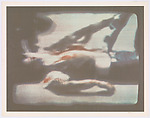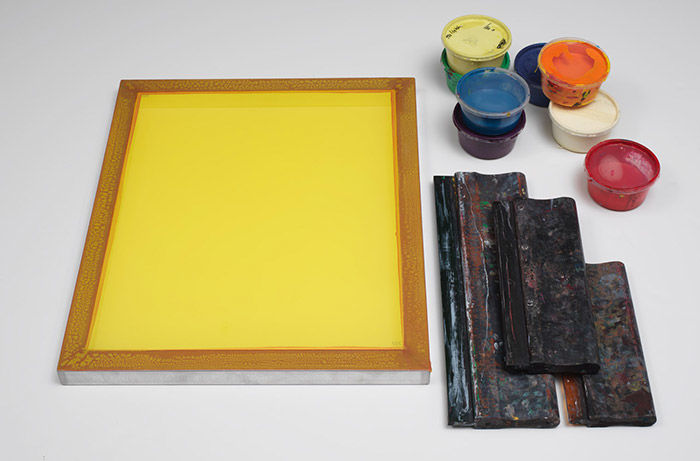Kent State
Richard Hamilton British
Printer Dietz Offizin, Lengmoos, Bavaria German
Publisher Dorothea Leonhart German
Not on view
Prints were an essential part of Richard Hamilton's oeuvre. They allowed him to experiment with form and technique by combining methods and creating new processes, as well as to allude to a variety of cultural references ranging from art history to popular culture. The image for "Kent State" was pulled from the television, a source Hamilton refers to with the print's rounded edges of the corners and the black outline. Hamilton has stated "It had been on my mind that there might be a subject staring me in the face from the TV screen." Equipped with a camera, he watched television for a week in May 1970 to realize this project. During this period the tragedy at Kent State occurred when the National Guard opened fire on students protesting the Vietnam War. Hamilton pulled the image of a wounded Ohio student in the print from the BBC news, which broadcast coverage of the carnage. About the image, Hamilton stated "Every night I sat watching [TV] with a shutter release in my hand... In the middle of the week the shooting of students by National Guardsmen occurred at Kent State University. This tragic event produced the most powerful images that emerged from the camera, yet I felt a reluctance to use any of them. It was too terrible an incident in American history to submit to arty treatment. Yet there it was in my hand, by chance--I didn't really choose the subject, it offered itself. It seemed right, too, that art could help to keep the shame in our minds; the wide distribution of a large edition print might be the strongest indictment I could make." [Richard Hamilton: Word and Image: Prints 1963-2007]
Hamilton intentionally created the work to be printed in a large edition but demanded it have the same quality as that of his smaller editions. "Kent State" was a remarkably complex print to make, requiring fifteen layers and thirteen screens (two were printed twice), none of which used halftone. Hamilton also refused to add any additional marks to the screens or manipulate the image in any way. "Kent State" is the most direct piece in Hamilton's oeuvre to engage the system and power of television. At the same time, it has uncanny links to works from art history, such as Edouard Manet's 1864 "Dead Toreador," in which the fallen bullfighter lies in a similar position, as well as civilian casualties in Goya's "Disasters of War" and his ”The Third of May, 1808" (1814).
Due to rights restrictions, this image cannot be enlarged, viewed at full screen, or downloaded.



